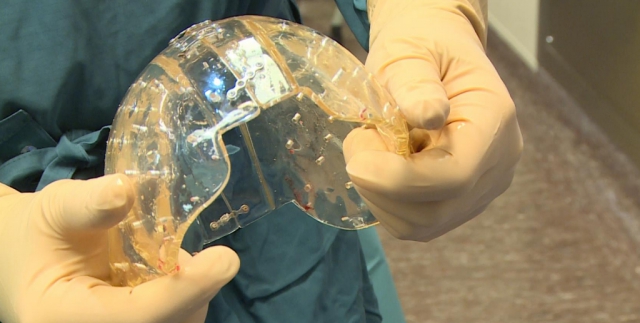SmarTech Medical 3D Printing Report: Materials space to grow nearly 700% by 2020
19 February 15SmarTech Medical 3D Printing Report: Materials space to grow nearly 700% by 2020

There’s no doubt that one of the more exciting areas within the 3D printing space is that of the medical field. We have seen tremendous strides made in just the last couple of years, leading to both biological and artificial 3D printing applications for bone, arteries, skin, and even organs. Over the next several years we will continue to see incredible growth in these areas, making our lives richer, and hopefully our pocketbooks a bit heavier.
Charlottesville, Virginia-based company SmarTech Markets Publishing has just released a research report titled ‘3D Printing in Medical Markets 2015: An Opportunity Analysis and Ten-Year Forecast’ that looks at where medical-related 3D printing is headed over the next decade, and the findings are quite an eye-opener. The report, which examines all aspects of the 3D printing industry that converge with the medical industry, concentrates mainly on materials and hardware, discussing the areas in which 3D printing must adapt to meet the needs of medicine. Some of the companies discussed in this report are 3D Systems, Arcam, Autodesk, Bespoke Innovations, e-Nable, EnvisionTEC, EOS, Innovation MediTech, Lima Corporate, LUXeXcel, Medical Modeling, Optomec, Organovo, Ossis, Oxford Performance Materials, Protos Eyewear, Rapid Shape, Renishaw, Stratasys, Visualization Sciences, voxeljet, Within Technologies, and Worrell.

Over the next five years, by 2020, the number of printers being shipped annually for medical use will have almost doubled to around 2,200. This pales in comparison, however, to the rate of growth which will be seen within the materials sector of the market. In 2014, revenues for materials used for medical 3D printing amounted to around $50 million. By 2020 this number will have increased nearly 7-fold to $345 million, according to SmarTech. This means that the market for materials will be larger than the market for the actual hardware to print these materials. The main driver of this tremendous growth within the materials market is the rapidly expanding need for custom medical implants and models. [s3]
Last year a total of over 1,100 3D printers were sold with the intent to be used for medical purposes. Of these 1,100 printers, 60% or about 660, fell into the category of material jetting or photopolymerization. These types of machines are typically used for printing surgical guides and tools, hearing aid shells, and medical prototypes.
In 2014, the revenue realized from the sale of medical 3D printers was split down the middle between North America and Europe. SmarTech sees this changing a bit, with China emerging as a powerful player within the medical 3D printing products and services space, as they continue to invest heavily within the area. By 2020, SmarTech envisions revenues of around $95 million coming from the Asia Pacific region, and North America and Europe also will continue to see substantial revenue growth.
The figures above do not take into account the possible implications of 3D bioprinting within the market, as there are several companies working on technologies which could possibly change the way we look at biological transplantation forever.
For those who are interested in the entire report, which identifies the main opportunities within the medical 3D printing space, it is available for purchase here.
Let us know if you agree with SmarTech’s finding, and what your general thoughts are on the medical 3D printing industry. Discuss in the SmarTech Medical 3D Printing forum thread on 3DPB.com.
Subscribe
Latest News market innovation



